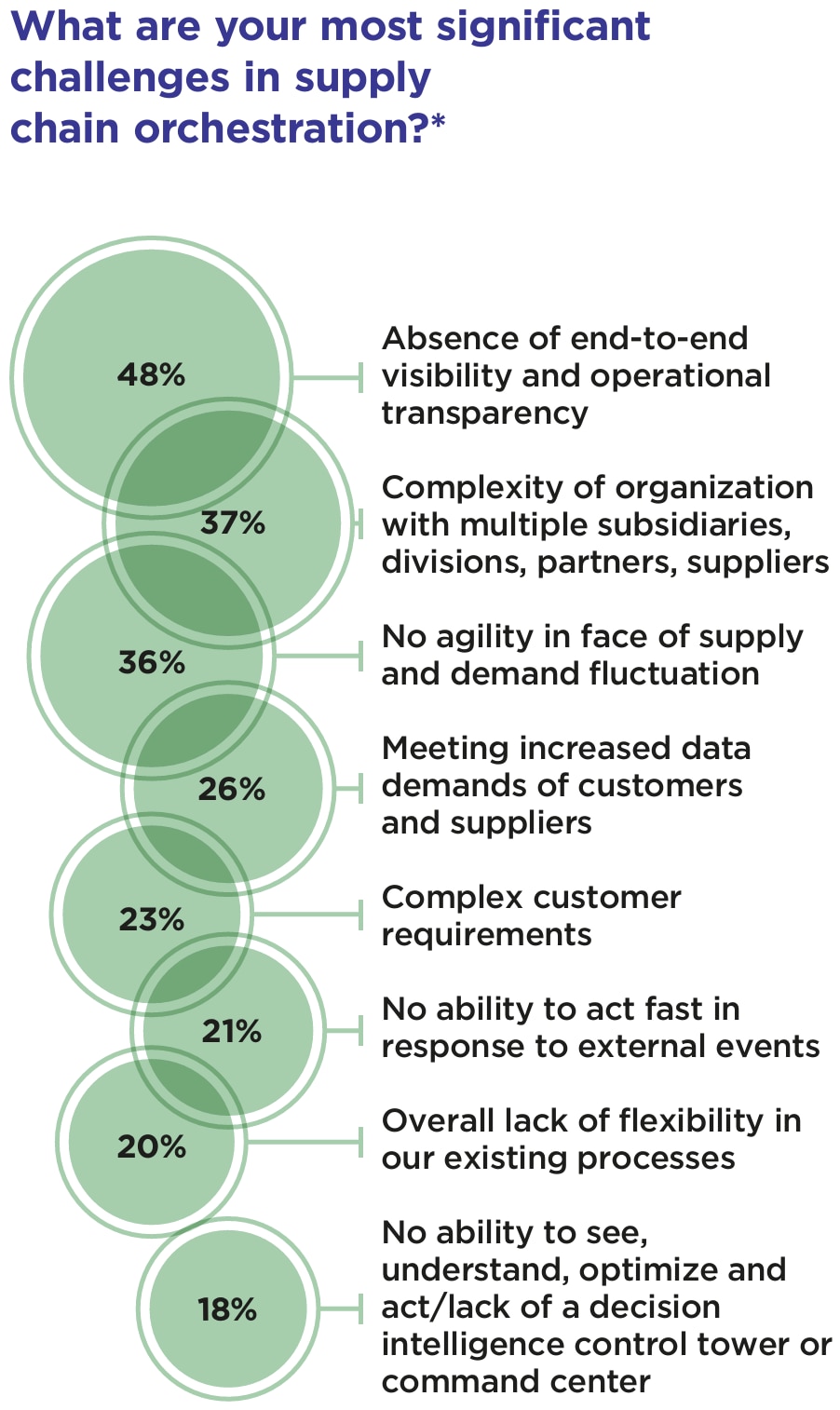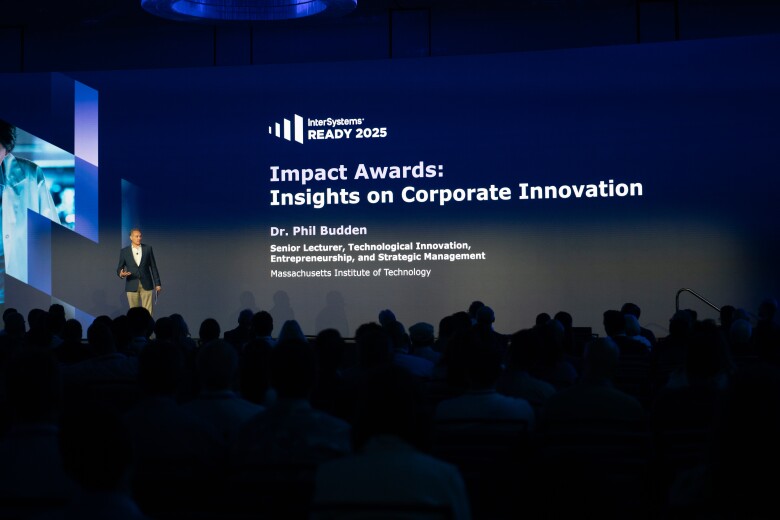As global supply chains become more complex, with thousands of disparate systems, applications, and data sources, supply chain orchestration becomes increasingly important. Globalization, multi-tier supplier networks, outsourcing, and omnichannel retail have made supply chains sprawling and interconnected. A product may involve raw materials from five continents, assembly in three countries, and final delivery through multiple carriers. To succeed, organizations must lay the groundwork for effective orchestration, ensuring resilience and agility in the face of disruptions.
Supply chain orchestration is the coordinated management of end-to-end supply chain activities, across planning, sourcing, production, logistics, and delivery, using technology, data, and processes to ensure that every moving part works together seamlessly. Or, as Gartner® describes it, "supply chain orchestration platforms power the transition of supply chain management from the back office to confronting and navigating business uncertainties. To enable this transition, these platforms use enterprise data enriched with network insights to prescribe and execute decisions in a governed manner"¹.
Unlike traditional supply chain management, which often operates in silos, orchestration emphasizes real-time visibility, synchronization, and collaboration across stakeholders, systems, and geographies. Essentially, supply chain orchestration is about integrating all elements of the supply chain ecosystem to function as a unified whole.
Without orchestration, these networks risk duplication of effort (e.g., multiple systems tracking the same order differently), siloed decision-making (procurement optimizing for cost and logistics for speed, without alignment), and breakdowns in visibility (no clear view of where inventory is at any given time). Supply chain orchestration bridges these gaps by connecting data, processes, and stakeholders into a single, coherent operating model.
Organizations that can respond more quickly and effectively to disruptions reap the benefits of supply chain orchestration in ways such as improved disaster preparedness and a stronger return on investment.
An Introduction to Supply Chain Orchestration
Supply chain orchestration enables organizations to attain an agile and resilient supply chain model through the use of decision intelligence. This is achieved through the See > Understand > Optimize > Act framework, which gives organizations the confidence to plan and respond to disruptions with assurance in their supply chain stability.
- See: this is the initial step of gathering raw data and information from your environment or a situation.
- Understand: analyze the information you’ve seen to build a comprehensive understanding of the context, your knowledge, and potential complexities.
- Optimize: based on your understanding, develop the best possible solution or course of action to address the situation.
- Act: implement your chosen solution, putting your knowledge into practice.
From a practical standpoint, this framework powers your supply chain application ecosystem with end-to-end visibility, insights, and better decisions. It helps organizations reach their supply chain goals by enabling them to align processes, stakeholders, and technology toward desired outcomes. The end result is reduced costs, improved operating margins, and optimized sustainability decisions, among others.
Recognizing the growing complexity of global supply chains, and the challenges associated with supply chain orchestration, InterSystems surveyed 450 senior supply chain practitioners and stakeholders to examine key supply chain technology challenges, trends, and decision-making strategies across five common use cases: fulfillment optimization; demand sensing and forecasting; supply chain orchestration; production planning optimization; and environmental, social, and governance (ESG). These specific use cases illustrate how orchestration addresses unique supply chain scenarios and requirements. This blog is Part 3 in our Optimizing Supply Chain Performance with Unified Data series, with a focus on supply chain orchestration.
In the unified data survey, respondents were asked what is holding them back from achieving full orchestration of their supply chain. The biggest barrier to achieving full supply chain optimization is having little or no integration of disparate data sources (including systems and applications) according to 46% of respondents. Integrating these disparate systems can be time consuming, adding to the complexity of orchestration. A lack of data integration creates big challenges for supply chains because supply chains rely on visibility, coordination, and speed across many moving parts, including suppliers, manufacturers, third party logistics providers, distributors, and retailers. When data is fragmented, delayed, or siloed, organizations can’t make timely, accurate, or collaborative decisions. It’s worth noting that this barrier ranked consistently high across multiple industries, including automotive and aeronautics (46%), FMCG (56%), logistics and transport (52%), manufacturing/CPG (44%), and retail (45%).
Supply Chain Orchestration Challenges and Response
Survey respondents were asked to identify the most significant challenges in supply chain orchestration. Leading the way was the absence of end-to-end visibility and operational transparency (48%). End-to-end visibility is important because it provides real-time, comprehensive data across an entire supply chain. This enables businesses to anticipate and mitigate risks, optimize operations, improve decision-making, increase agility, reduce costs, and enhance customer satisfaction. Operational transparency is a critical part of end-to-end visibility and is of utmost importance for senior management. According to the survey, the higher their level of seniority, the more likely respondents were to say lack of end-to-end visibility and operational transparency are difficulties— almost 60% of VPs and Directors of Logistics selected this as a challenge, along with almost 70% of C-level respondents.

The second most significant challenge identified by respondents was the complexity of organization with multiple subsidiaries, divisions, partners, and suppliers (37%). Too many organizations operate in isolated silos, let alone subsidiaries or divisions. This includes enterprise technology systems and processes, which slow down data sharing and decision making. The siloed nature of many businesses makes it incredibly difficult to ensure that every moving part works together seamlessly.
Finally, a lack of agility in the face of supply and demand fluctuation was identified as the third most significant challenge (36%). Supply chain agility is all about a company’s ability to rapidly and efficiently adjust its operations, resources, and strategies to respond to changing market conditions. While the ability to quickly pivot is crucial across all aspects of supply chain management, it is especially important when tracking actual demand versus projected demand, and balancing it with supply fluctuations.
The big question becomes how does a company respond to these challenges? Looking at how supply chain organizations can overcome these challenges, almost all respondents agreed that an ultimate control tower approach would most improve supply chain orchestration by giving them a unified view of their data (85%). Advanced solutions, such as predictive modeling, automation, and integrated digital platforms, play a key role in improving orchestration and addressing these challenges.
The Value of Ultimate Supply Chain Control Tower

A control tower provides predictive and prescriptive actionable insights that address disruptions and constraints along the entire supply chain. Control towers also help manage exception situations by identifying when predefined processes are disrupted and enabling timely manual or automated intervention to maintain smooth operations.
For instance, when a sudden shortage of raw materials threatens to halt production, a control tower can immediately provide updates on inventory levels, goods in transit, and alternative suppliers. This enables supply chain managers to prepare contingency plans, reroute shipments, or adjust production schedules in real time, minimizing risks and ensuring continuity of operations. The ability to monitor and respond to such events not only reduces the impact of disruptions but also enhances customer satisfaction by maintaining service levels and delivery commitments.
Additionally, control towers help companies gain a deeper understanding of their supply chain by connecting disparate data points and providing actionable insights. This holistic view allows organizations to identify bottlenecks, anticipate risks, and make informed decisions that drive efficiency and resilience. By leveraging the power of sensors and real time data, companies can provide better services, improve the flow of goods, and ultimately achieve a higher level of supply chain performance.
An ultimate control tower is also used to:
- Improve time to decision in the most optimal, operationally efficient, and collaborative manner.
- Enable optimized supply chain orchestration by providing end-to-end visibility (“see”), data-driven insights (“understand”), end-to-end prediction and orchestration (“optimize”) and ultimately, end-to-end aligned decision making (“act”).
- Provide powerful analytics capabilities that incorporate actionable insights into supply chains across the global ecosystem by combining four key capabilities (see, understand, optimize, act) into a single capability, applicable to any use case.
Case in Point
CFAO, a €4.2 billion France-based logistics company conducts business in more than 40 countries and overseas territories.
The company faced many difficulties with data management that spanned interoperability, customer experience, e-commerce, and support for shopping malls. It used InterSystems technology to centralize the data of 120 subsidiaries into a composite business process, eliminating blind-spots for the business, partners, and customers.
The result has been vastly improved efficiencies and time to value across the business. New partners now on-board in two days instead of six months. Customers gain answers to questions in five minutes rather than hours. These improvements have given CFAO greater confidence in their supply chain operations.
Final Thought on Supply Chain Orchestration
What if you could attain agility across the most complex and intricate global supply chains? InterSystems Supply Chain Orchestrator is a differentiated data platform that does just that, providing unique orchestration capabilities that lock in greater efficiency and higher revenues, with fast time-to-value. Its differentiating capabilities—such as advanced control towers, IoT sensor integration, and AI/ML-driven insights—set it apart from other solutions by enhancing supply chain visibility, responsiveness, and orchestration.
Our technology creates the ultimate control tower with true end-to-end visibility. Leveraging this approach, it’s possible to extract business-critical, highly actionable prescriptive insights from real-time data without replacing your existing systems. It will empower you to react rapidly to changes across your entire supply chain and accelerate digital transformation.
Read the full report here
¹ Gartner, innovation Insight: Supply Chain Orchestration Platforms Power the Modern Supply Chain, Balaji Abbabatulla, Christian Titze, 26 June 2025. GARTNER® is a registered trademark and service mark of Gartner, Inc. and/or its affiliates in the U.S. and internationally and is used here in with permission. All rights reserved.






























